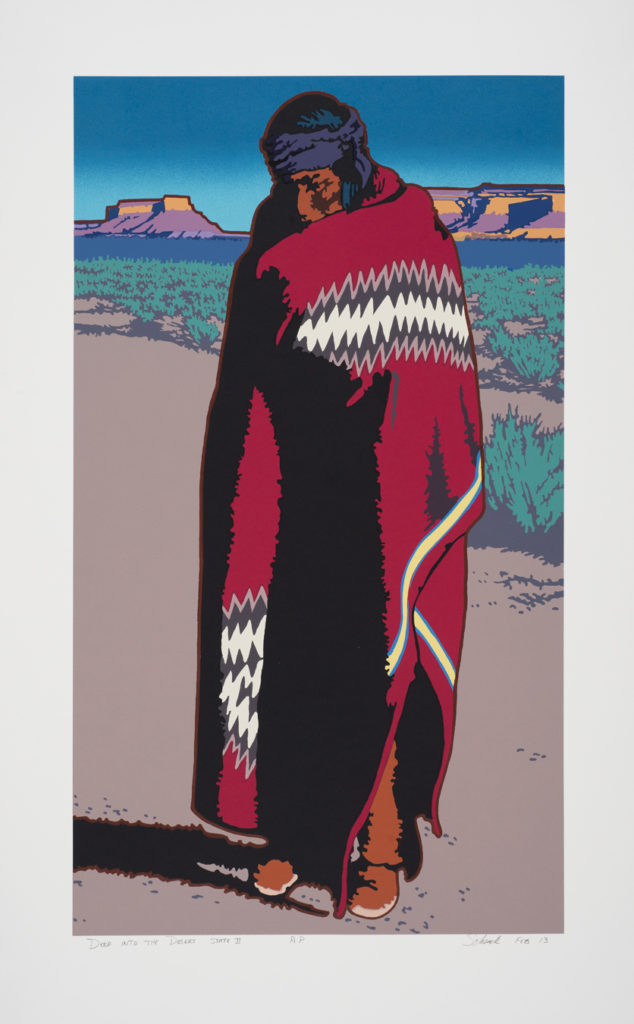 Deep Into the Desert (State II)
Deep Into the Desert (State II)
Click here to see Serigraphs available for sale
Billy Schenck’s Serigraphs
Unlike a giclee or other digital printing process, a serigraph is hand pulled art process requiring a skilled artist and press – see below. Each image is limited to a numbered edition. Most of Schenck’s editions are sold out – yet appear from time to time on the secondary market. Serigraphs still available can be purchased directly from Schenck Southwest.
“Serigraphy is a fine art, color stencil printmaking process in which special paint is forced through a fine screen onto the paper beneath. Areas which do not print are blocked in each of the stencil screens. A sheet of high quality, archival paper is first inserted under the screen and special paint poured along the edge of the frame. A squeegee is then pulled from back to front, producing a direct transfer of the image from screen to paper. A separate stencil is required for each color in each serigraph.
The use of silkscreen as a modern artist medium began in 1938 when a group of New York artists, under the auspices of the Federal Art Project, experimented with silkscreening…fully developing its potential. This group coined the term “serigraphy” and later formed the nucleus of the National Serigraph Society, which actively promoted the graphic form for twenty years. Among those active in the development of serigraphy were Anthony Velonis, who inspired the original project, and Carl Zigrossa, an art critic, who named the group.
In the 1960s, Pop Art took serigraphy to a new level of sophistication. Innovators such as Andy Warhol, Tom Wesselmann, Robert Raushenburg, and others, began experimenting in color and textures unavailable in other mediums. Printmaking ranks with painting, sculpture, and drawing as an important medium by which artists express themselves.” – Fermin Hernandez
“GICLÉE PRINTS ARE NOT ORIGINAL WORKS OF ART, BUT ARE RATHER REPRODUCTIONS OF ORIGINAL WORKS OF ART. Your (Billy Schenck) serigraphs, on the other hand, are original prints, each individually created and properly signed by you, the artist. There is no reason for the artist who created an original work to sign the giclée reproductions because they are machine-made prints and to sign them is like signing a calendar print. There is no reason that a signature should increase their value unless the autograph of that artist has value in the autograph market. Similarly, the only reason to produce a “limited edition” is to manipulate the perceptions of the buyers.
Let me make it clear that I do not disparage giclée prints. I only disparage those (artists and dealers) who pretend that they are works of art, done by the artist that carry artistic merit. They are what they are: commercially produced reproductions of original artworks. Nothing wrong with that. There is a legitimate market for them and they can legitimately give pleasure to their owners. But, they are not art, even if they are hand-highlighted by the artist’s brush.” – Bernard Ewell
(Ewell helped in writing the federal laws that legally define “Giclee” prints)